Views: 68
| A brief report of the first days Laos: |
| Frans Vandenbosch 19.10.2024 |
| Kunming, Boten, Luang Prabang. |
| Wednesday evening 16.10.2024 again had a really good meal in Kunming. Noodles with seafood and “Yunnan Bridge” soup: |
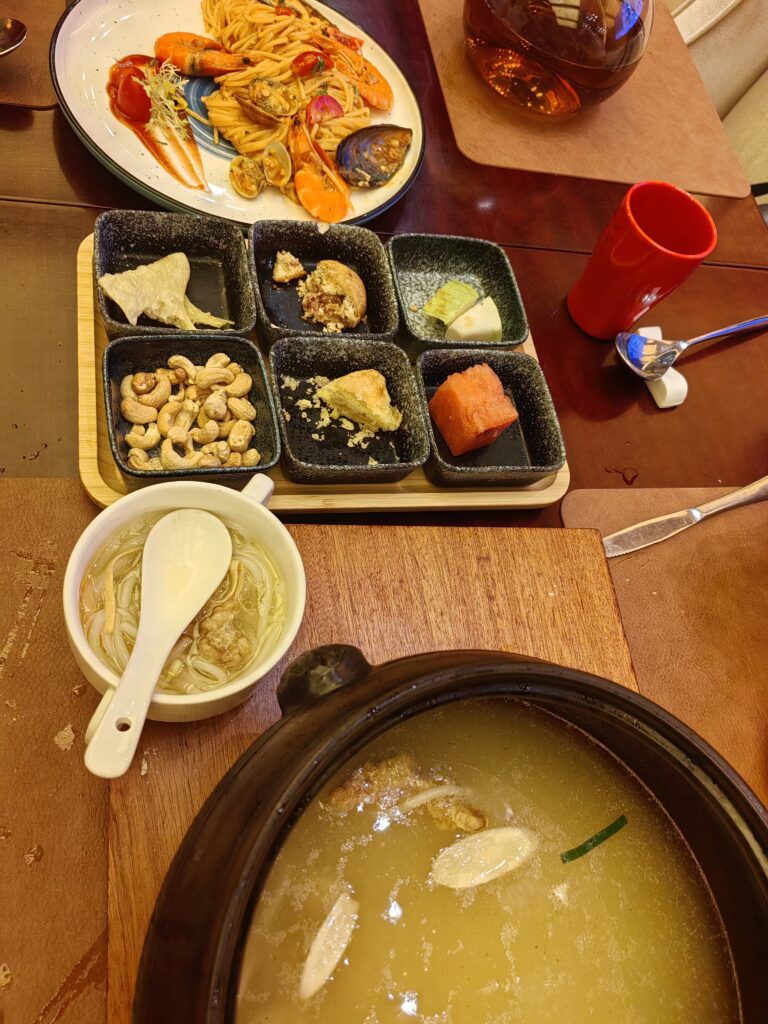 |
| On 17.10.2024 in Kunming, Yunnan, China took the new HST train to Laos. |
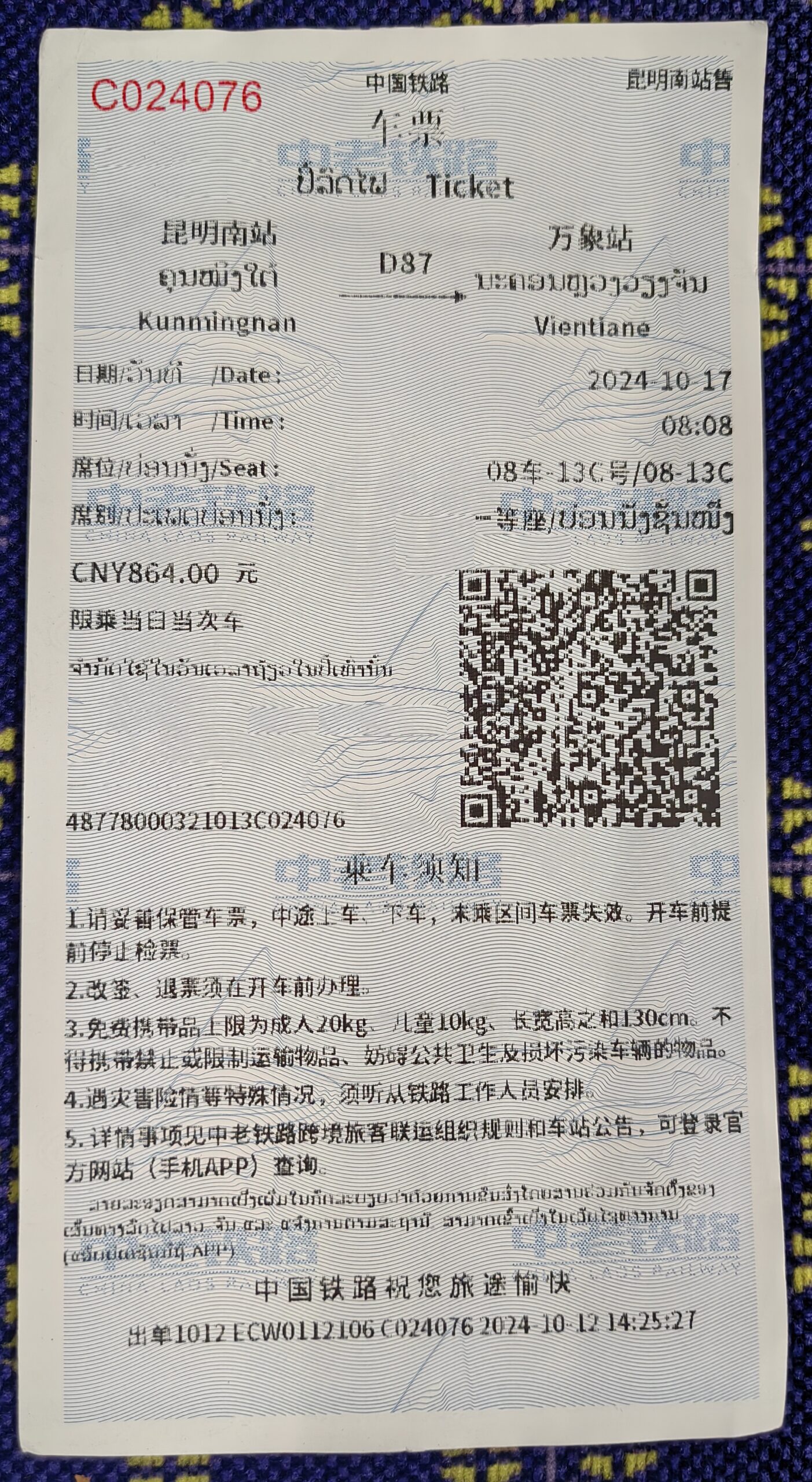 |
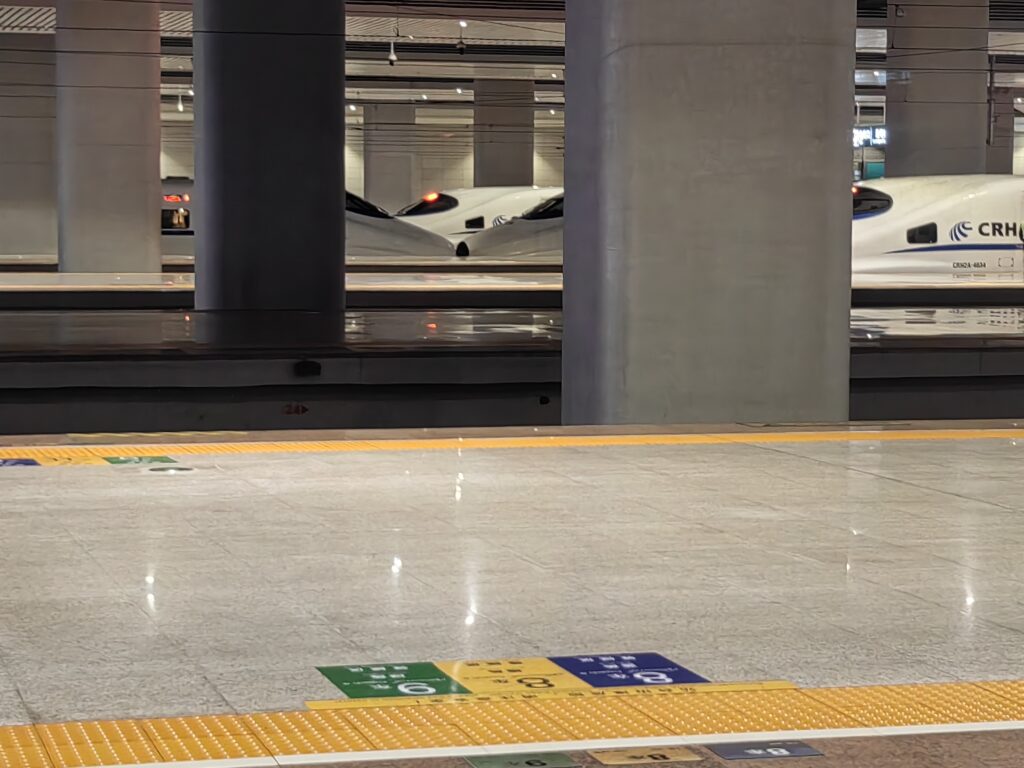 |
| At the map it looks like this: |
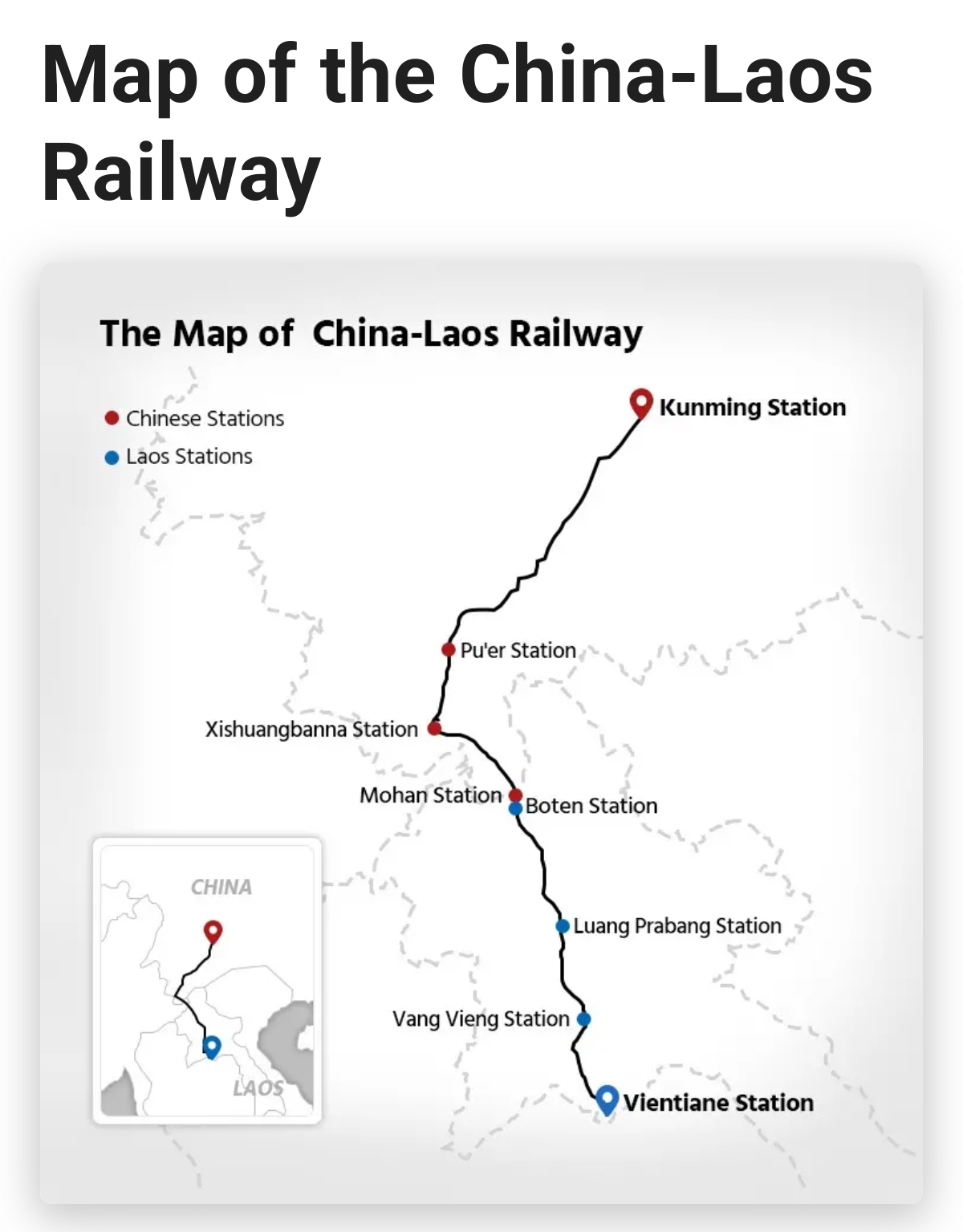 |
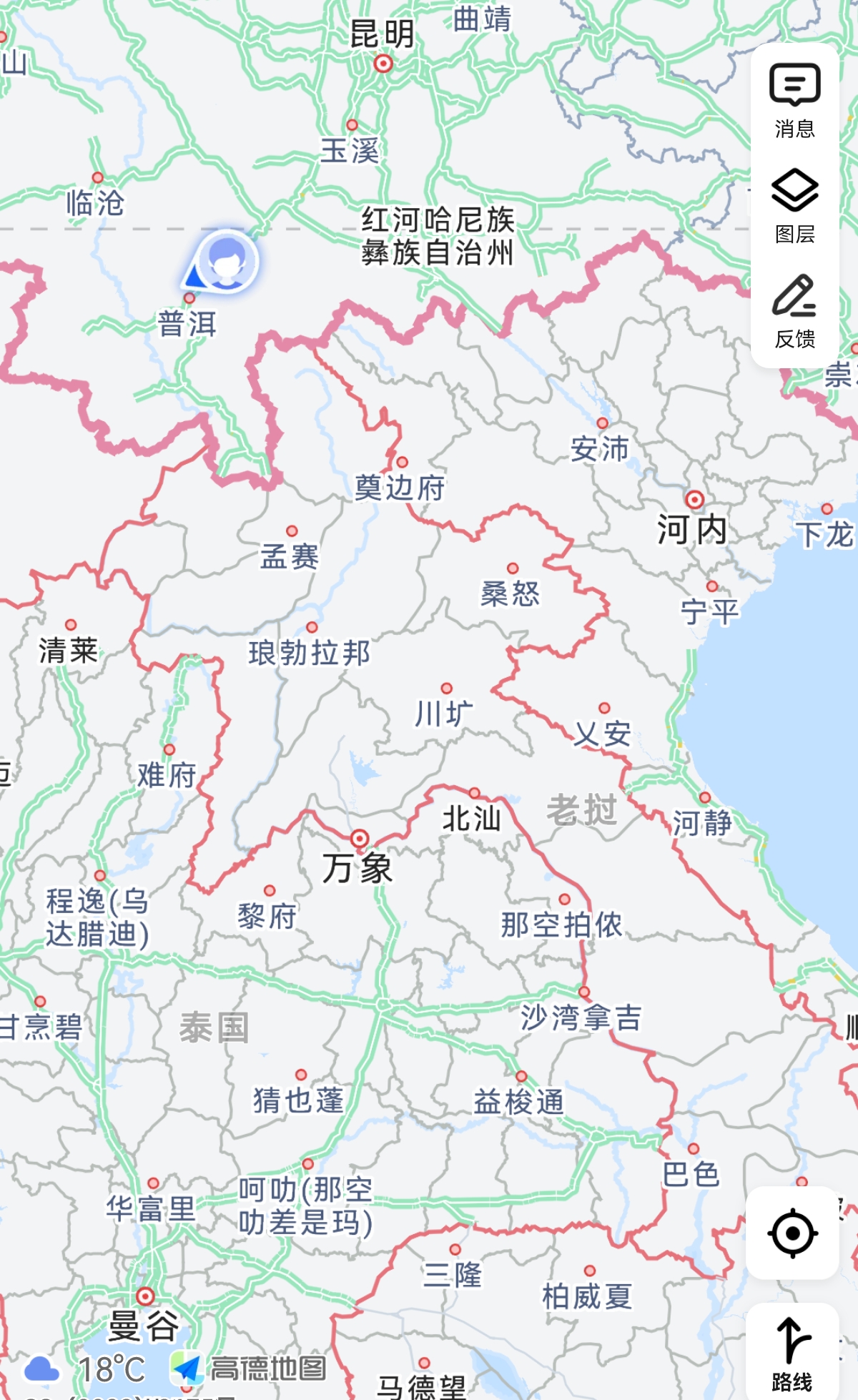 |
| Along the way an overwhelmingly beautiful landscape. The HST train races over dozens of bridges and tunnels through the numerous mountains: |
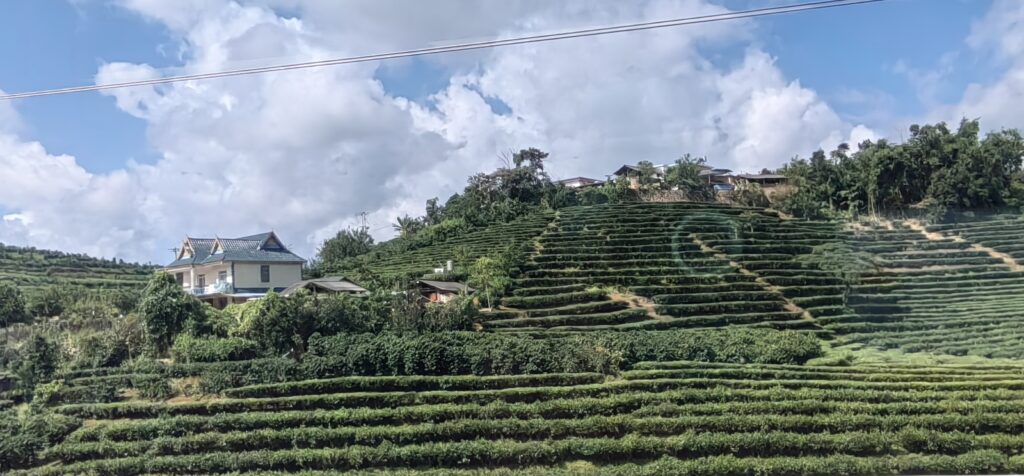 |
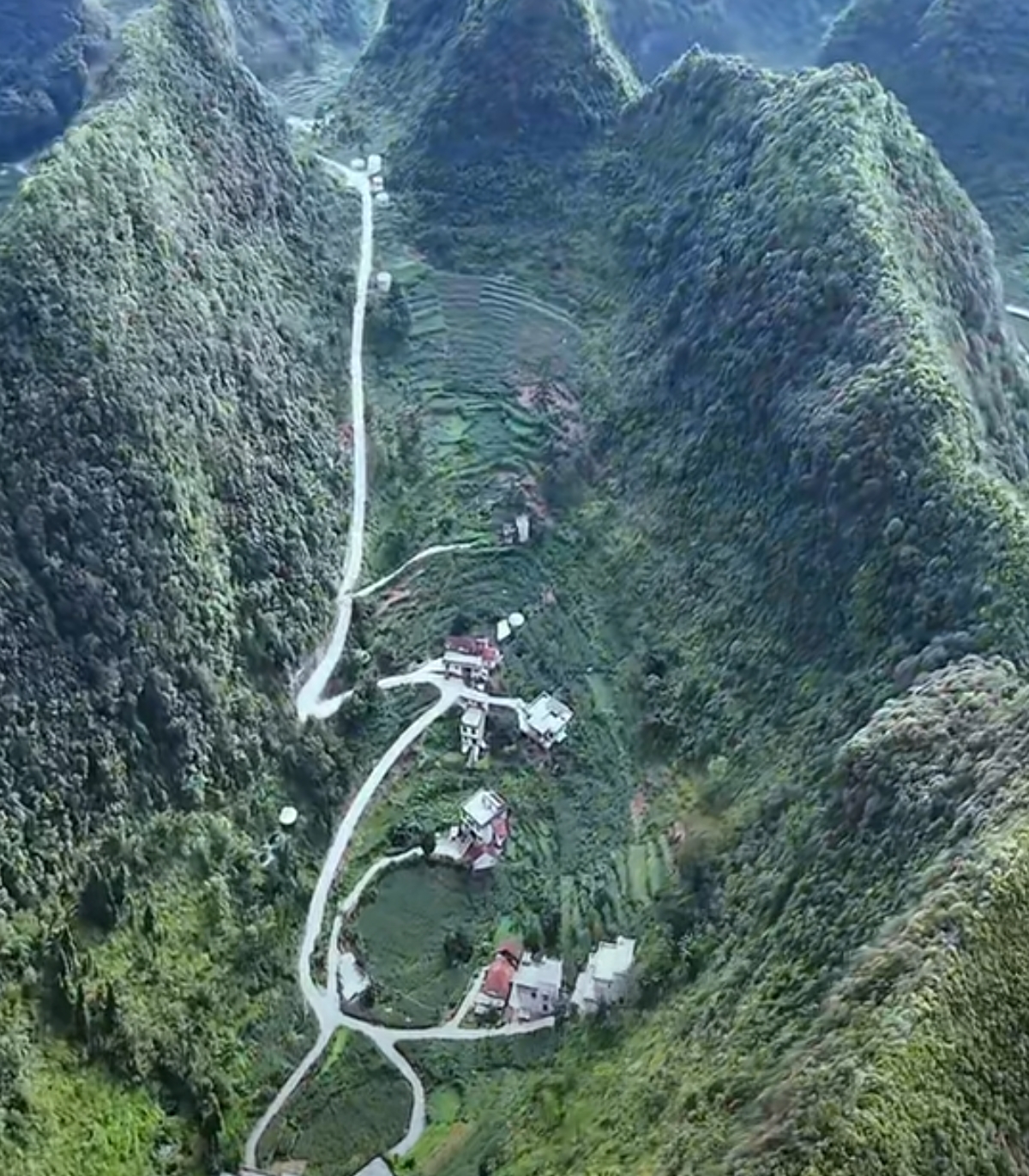 |
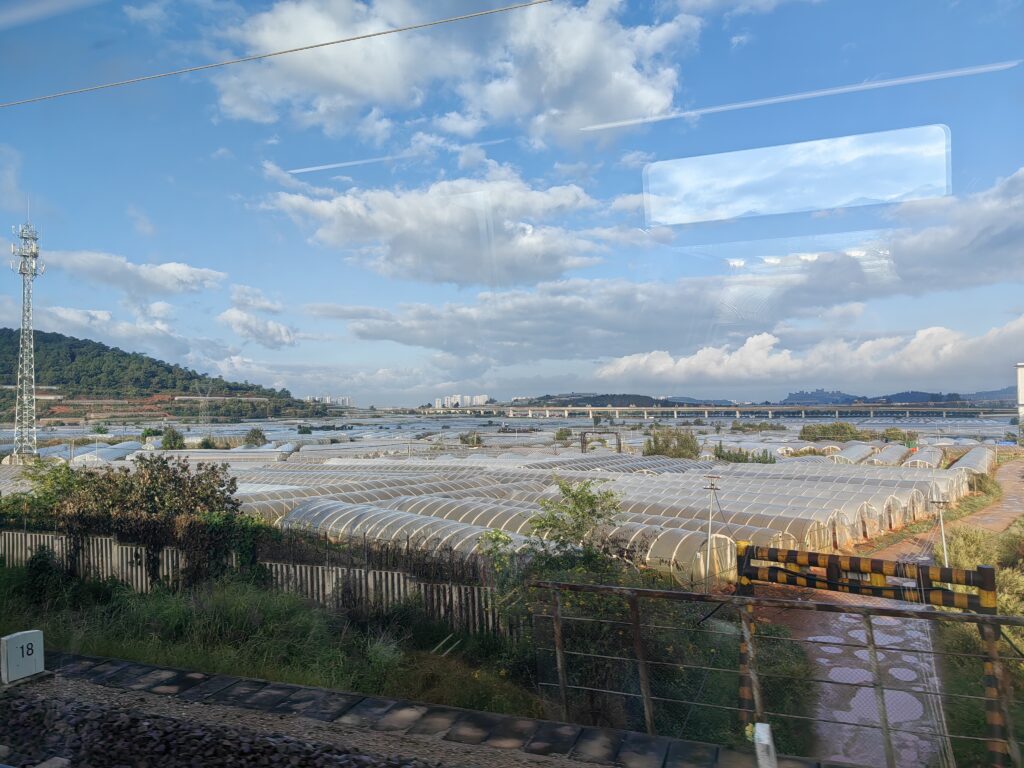 |
| The train stops in Pu Erh, where the famous Pu’er tea is harvested, fermented and processed. |
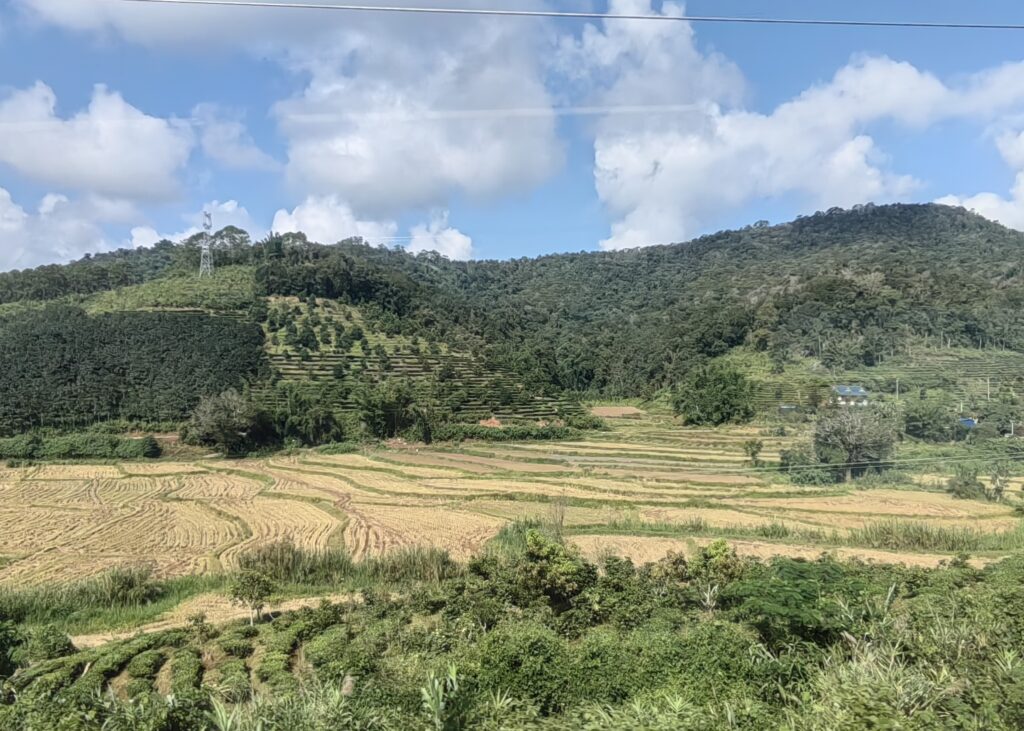 |
| In the south of Yunnan, in the region of Xishuangbanna, are the coffee plantations of the (not yet very well known, but excellent) Yunnan coffee. |
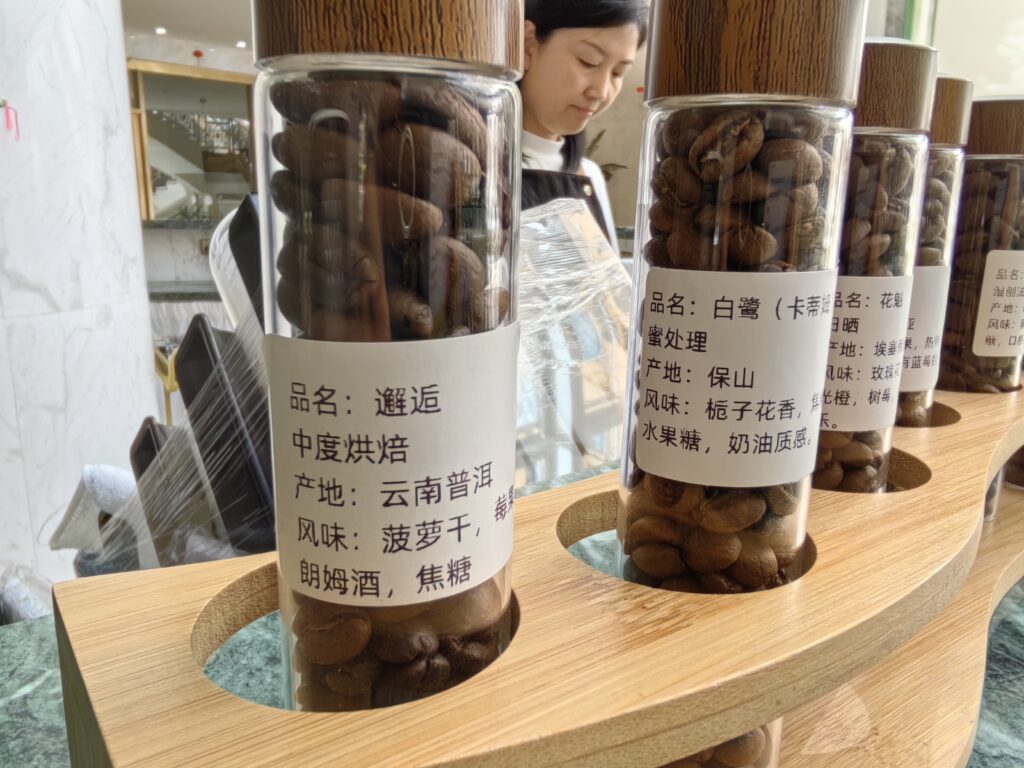 |
| I have already bought a few packs of coffee, because it is almost impossible to get in Europe (yet). |
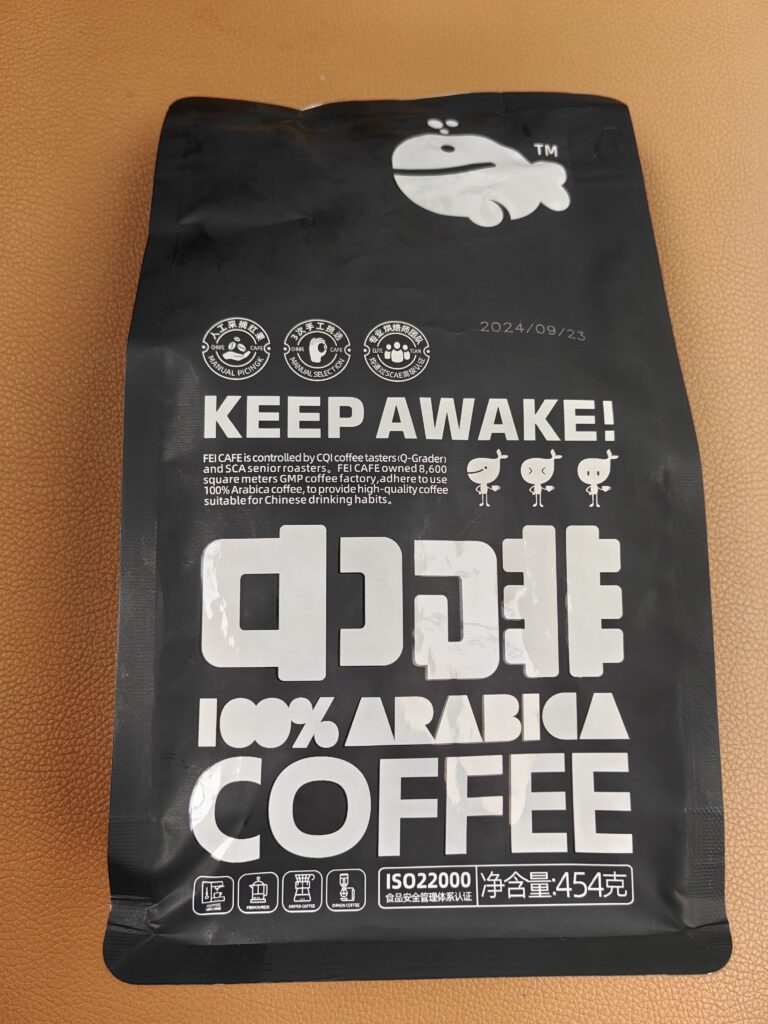 |
| Those tea and coffee farmers are doing good business there. |
| The last station in China is Mohan. Everyone has to get off the train there for the exit stamp of your visa in your passport. |
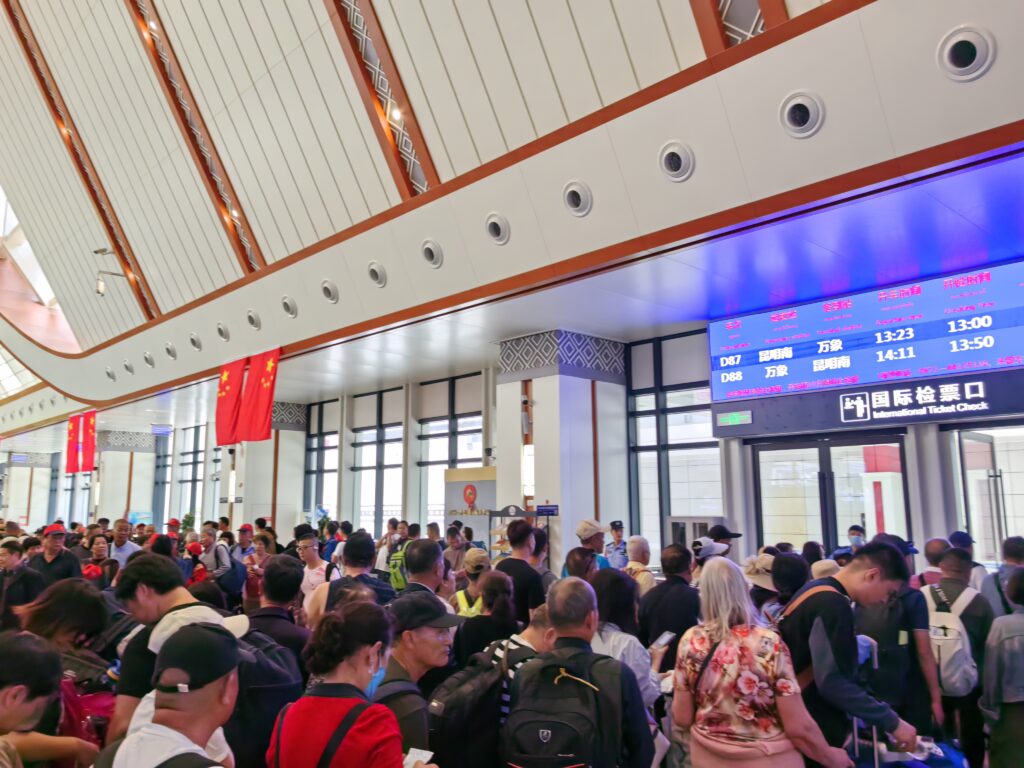 |
| That is all very efficiently organized. In less than fifteen minutes the >1000 passengers are through the China exit control, including the security check of the luggage and passengers. Back on the train through “no man’s land” to Boten, a little further in Laos. There they are less well organized. The “visa on demand” procedure is not adapted to the speed of the (Chinese) HST trains. |
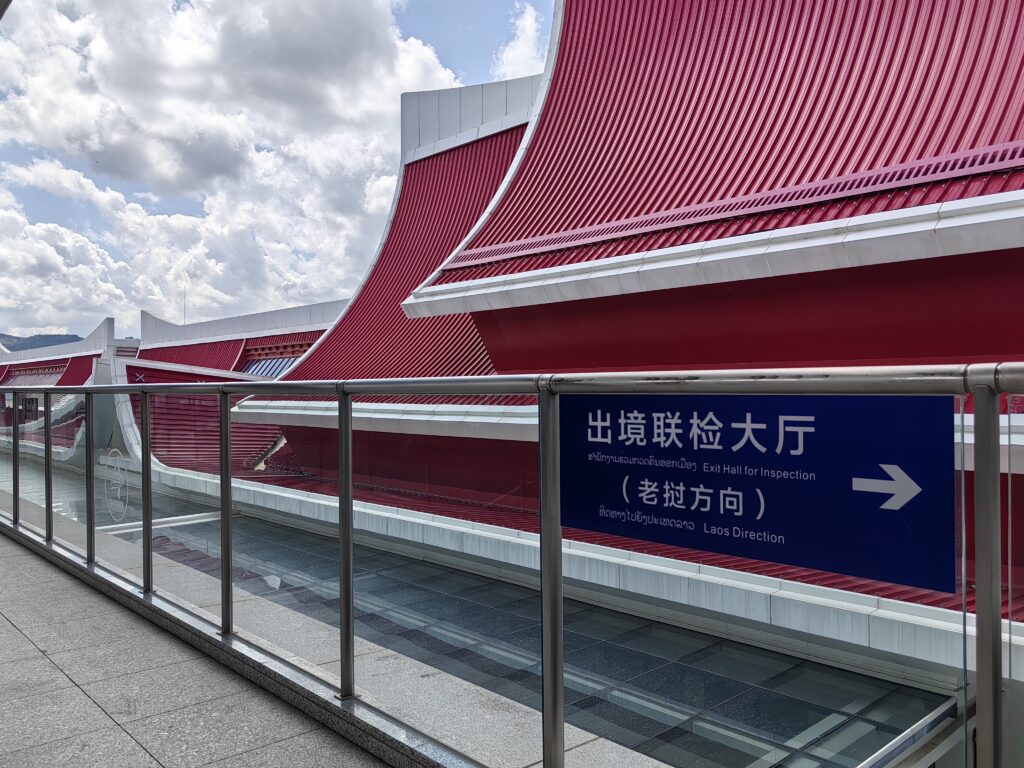 |
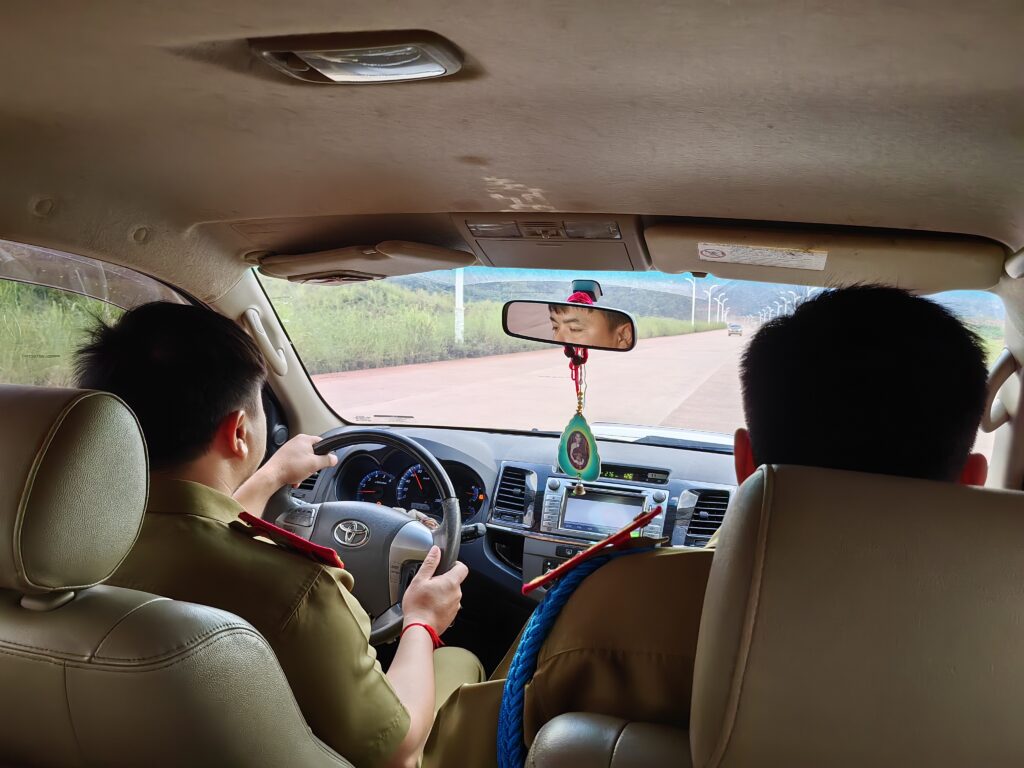 |
| As a result, I missed the train and was “stranded” in Boten. No problem, Boten in Laos is a very strange city. The “Boten Economic Area” has now, less than a year after the completion of the HST connection with Laos, become a new city in itself, larger than the original city of Boten. In Boten, almost everyone speaks Chinese, you can pay with WeChat Pay in RMB (Chinese Yuan) in hotels, shops, taxi drivers and restaurants. The BEA is in fact a Chinese city. |
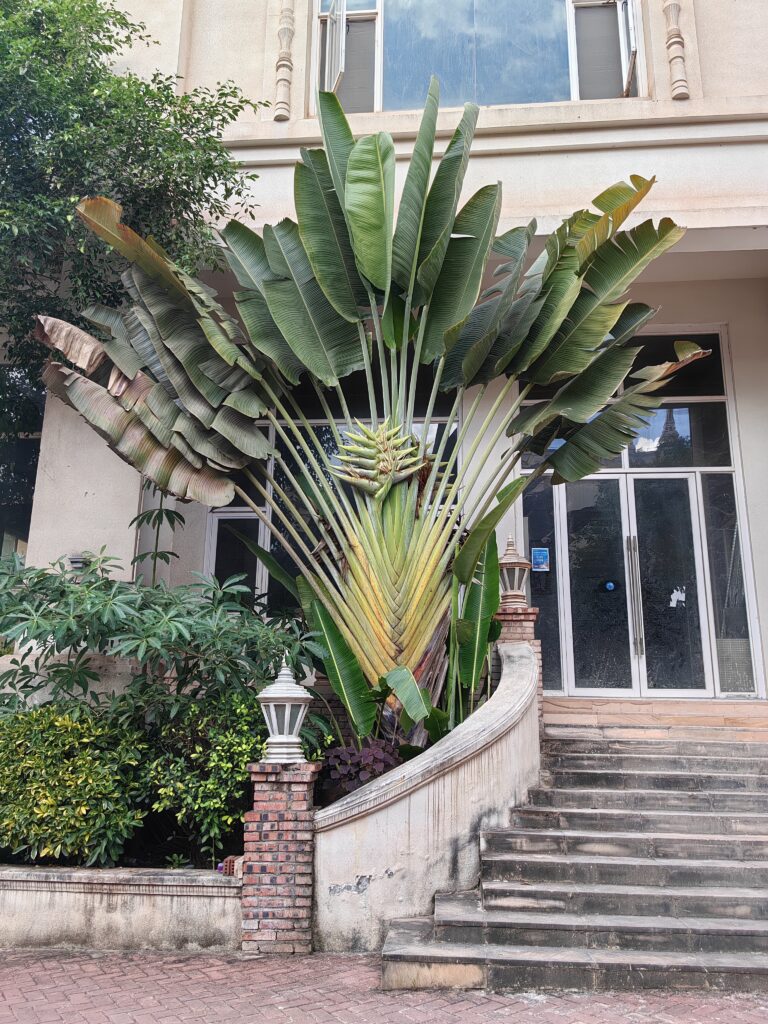 |
| In Boten Economic Area all buildings are new. Construction is going on at an unimaginable speed. New hotels, shops, apartments and shopping malls are being built on all sides. Almost all the mountains in the area are being dug up and flattened to expand the new city. I counted at least 6 mountains that they were flattening with a large number of bulldozers. In total I saw more than a dozen high rise apartment blocks under construction, usually with a shopping mall on the lower floors: |
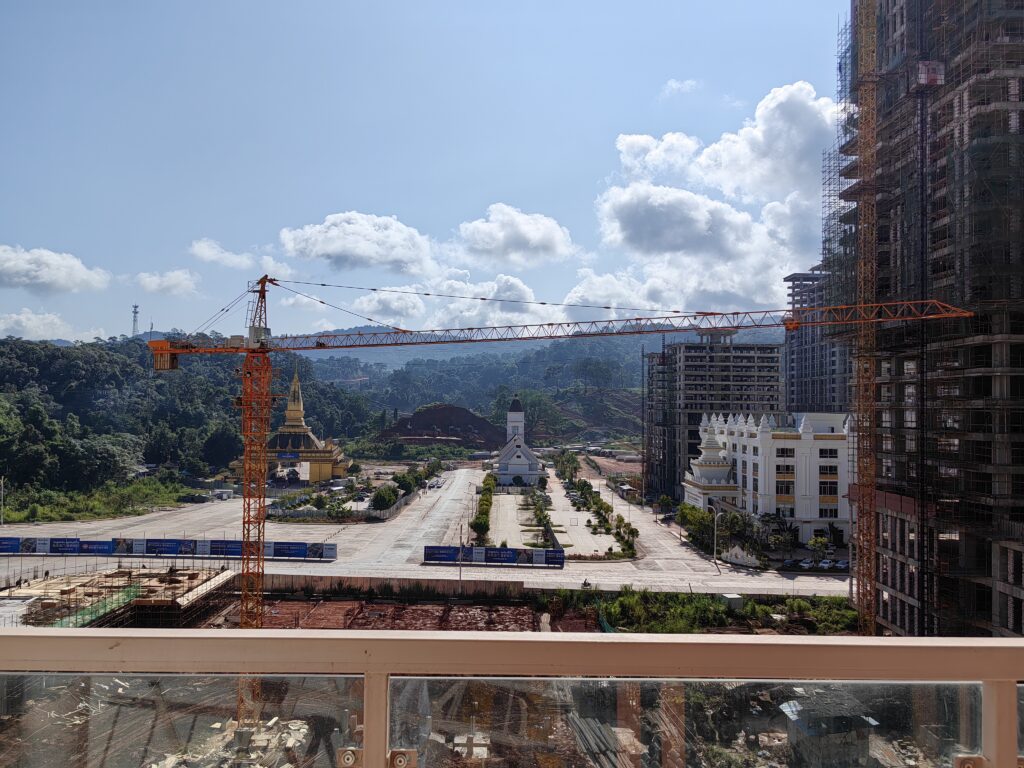 |
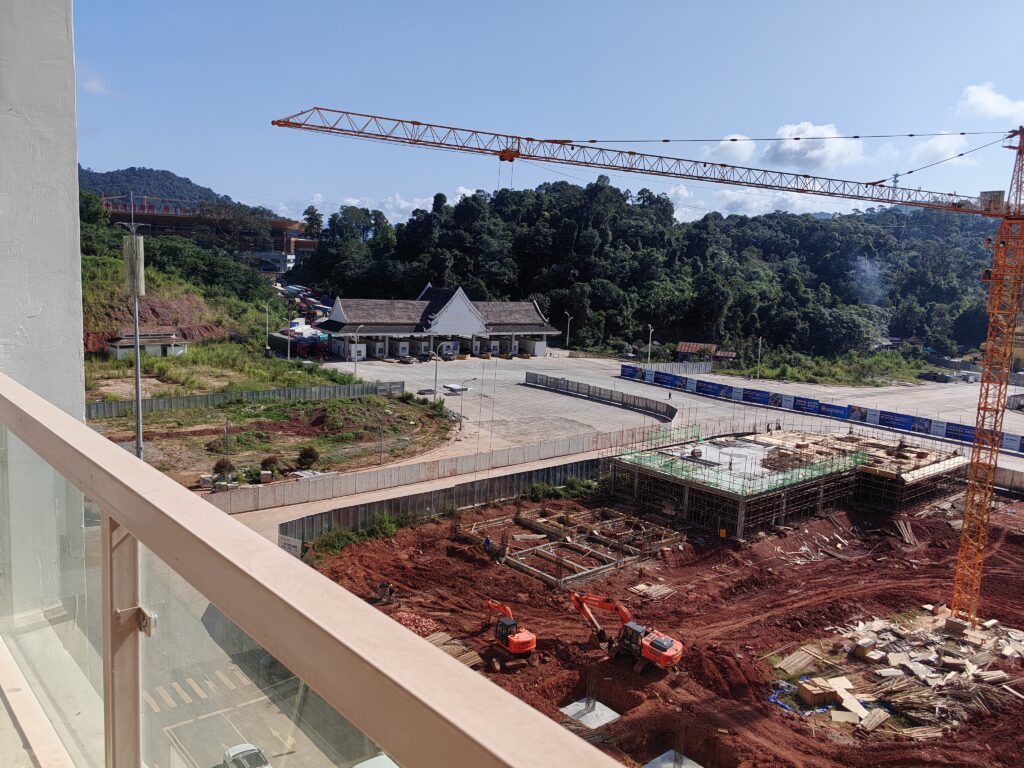 |
| In Laos they still have those super tasty, sweet, small, yellow mangoes (like they had in China until 5 years ago) Nowadays in China and also here all mangoes are much larger, green – red in color and tasteless. |
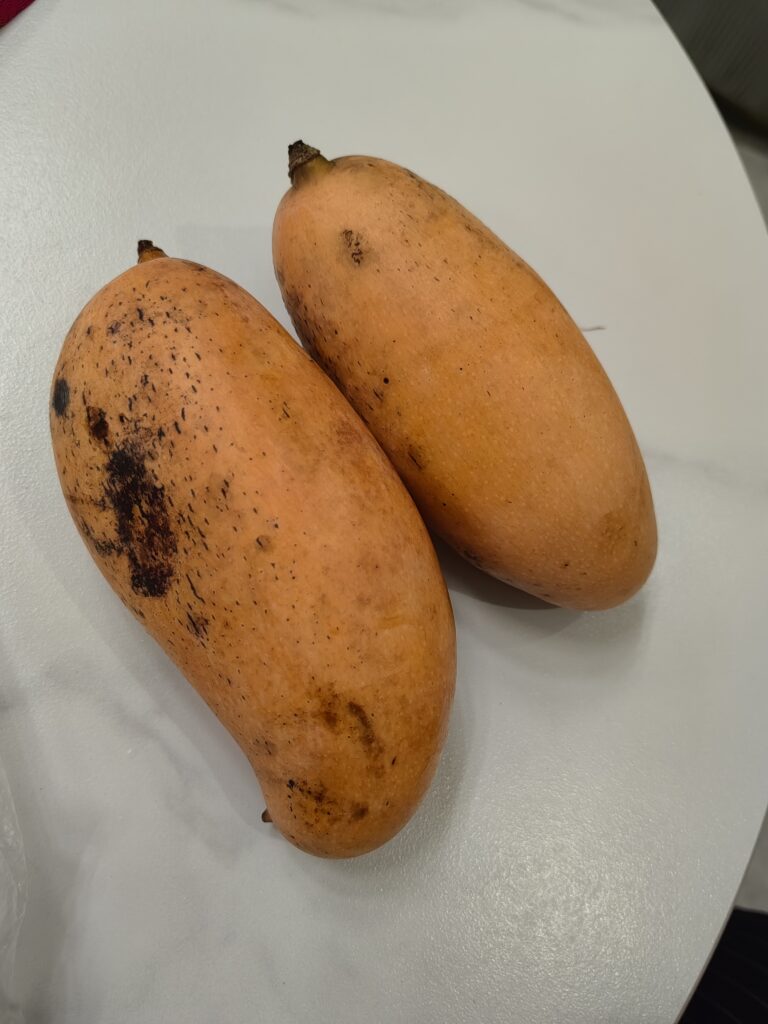 |
| Long grapes, sometimes called sapphire or moon drop grapes, never seen that in Europe: |
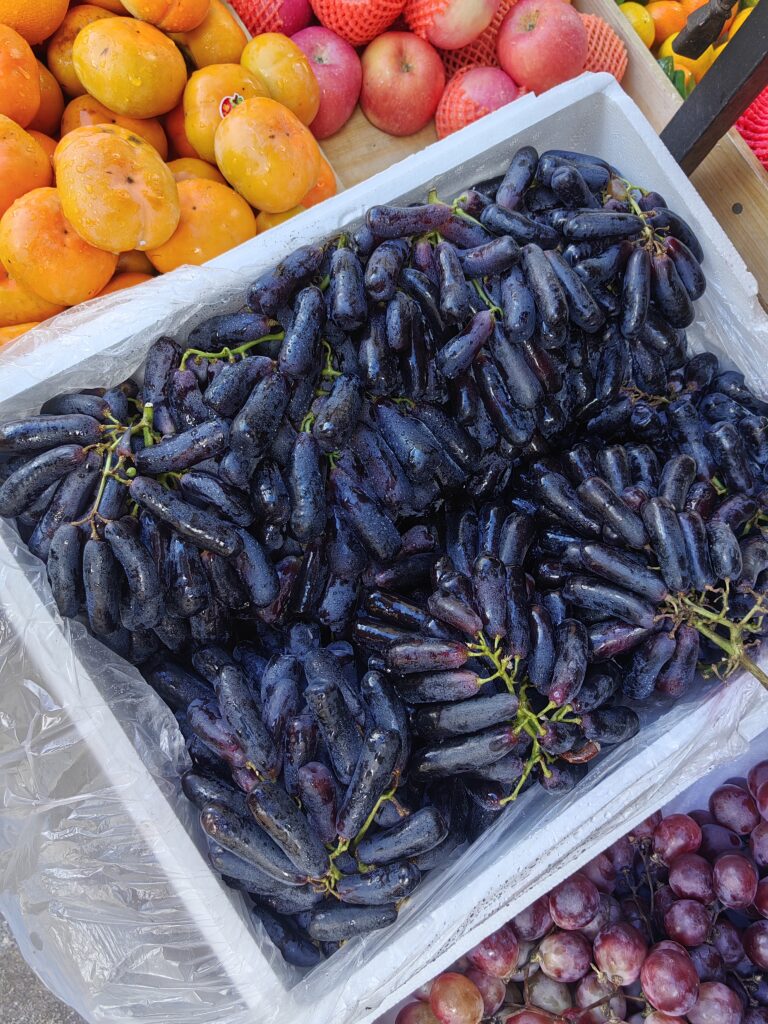 |
| Fresh live fish, frogs, mussels, … |
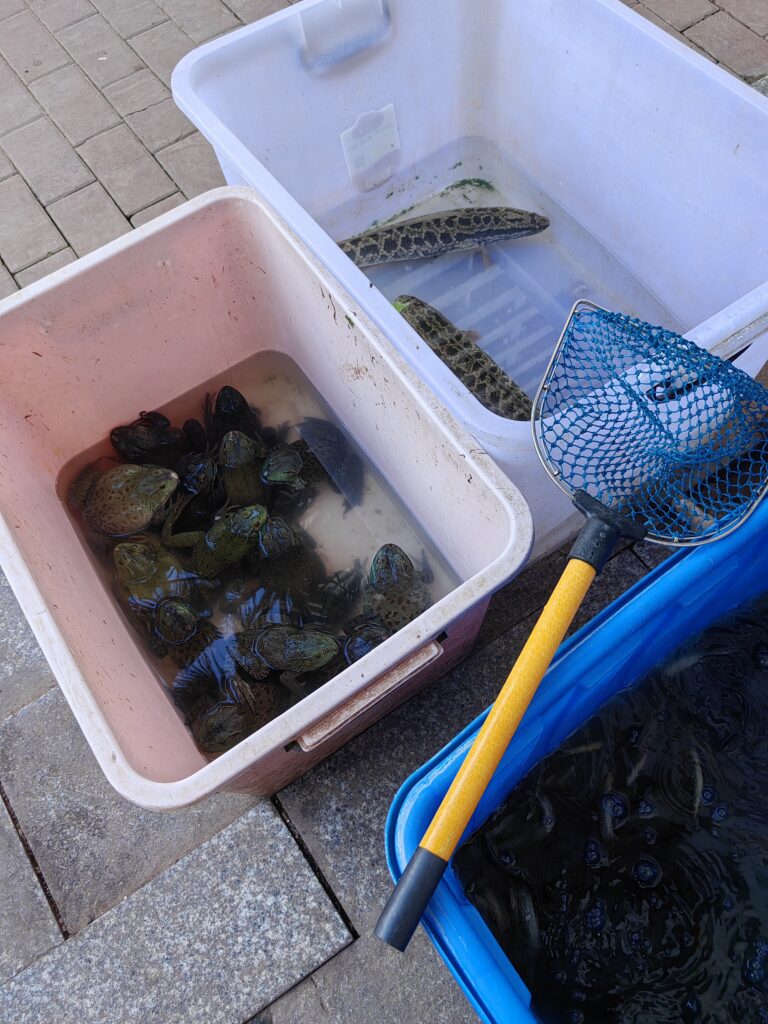 |
| Further. From Boten to Luang Prabang. The train more or less follows the Mekong. |
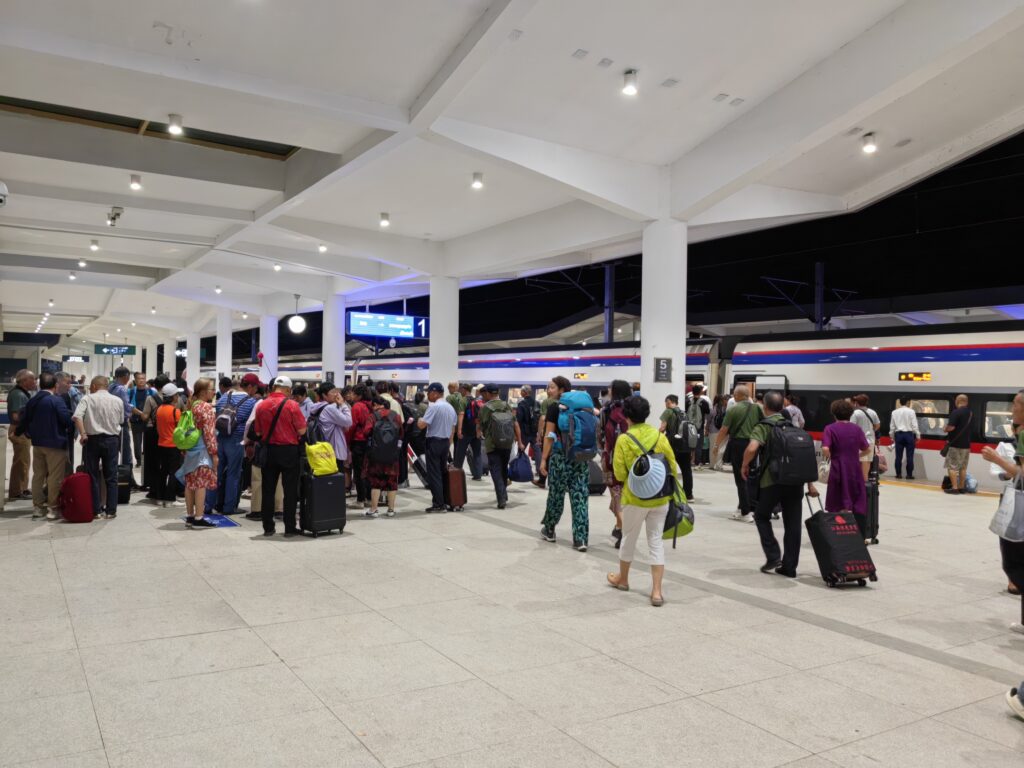 |
| Luang Prabang, that’s the real Laos: |
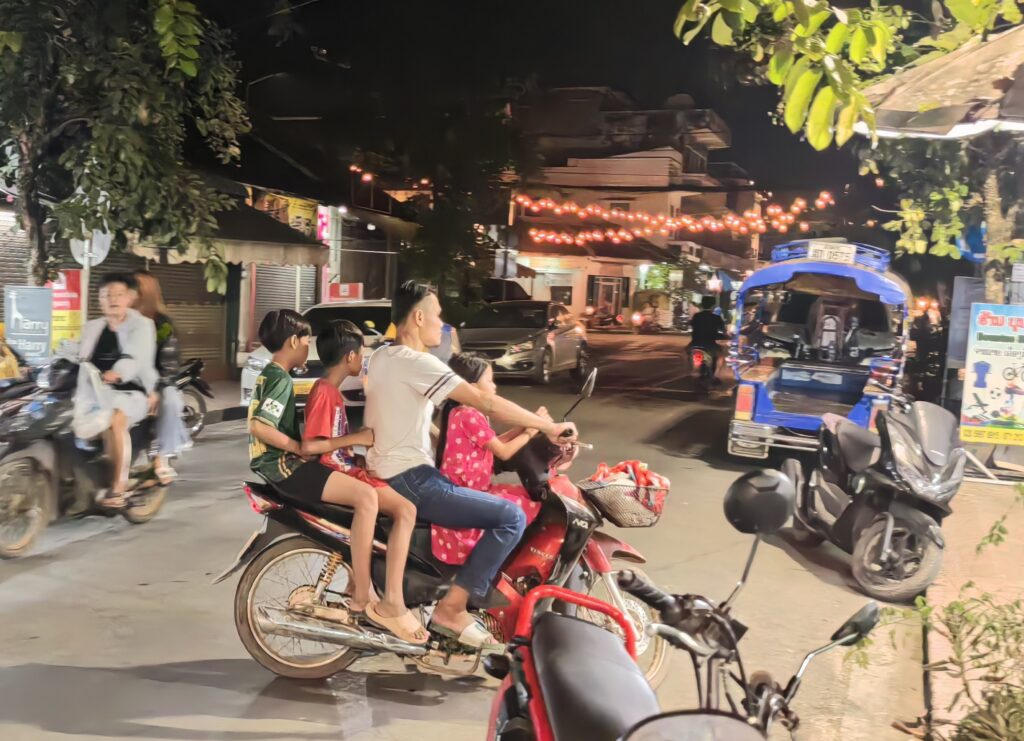 |
| No more Chinese influence here. No bilingual street signs. In Luang Prabang you pay with KIP, cash Lao money. Only in the big supermarket or in the big restaurants you can pay with WeChat Pay. |
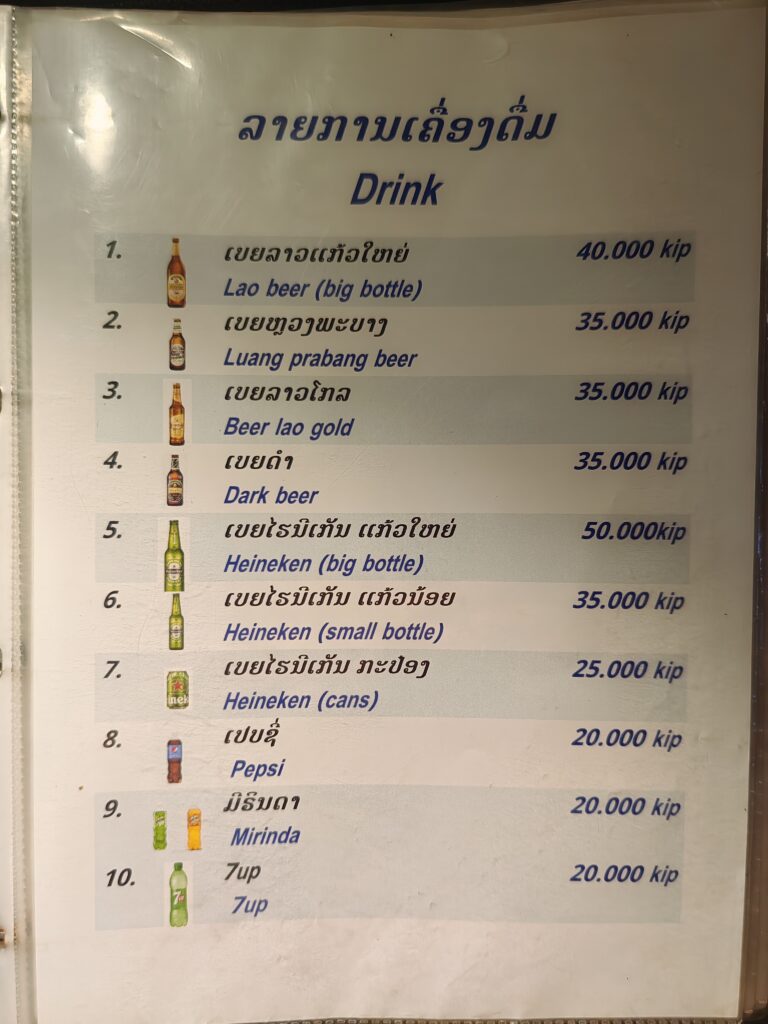 |
| Lao (ພາສາລາວ, Laotian) is the official language of Laos, a daughter language of Isan, as spoken in Isan, the Northeast of Thailand. In that region the language is called “Isan”. Lao (Isan, NE Thai) evolved from Old Thai, just like modern Standard Thai. Lao uses the same characters and grammar rules. Also in Xishuangbanna, in the south of China’s Yunnan province, they speak Isan (= Lao, NE. Thai) at home. Laotians and NE Thais can understand each other well and read each other’s script, much like Flemish people can read German. |
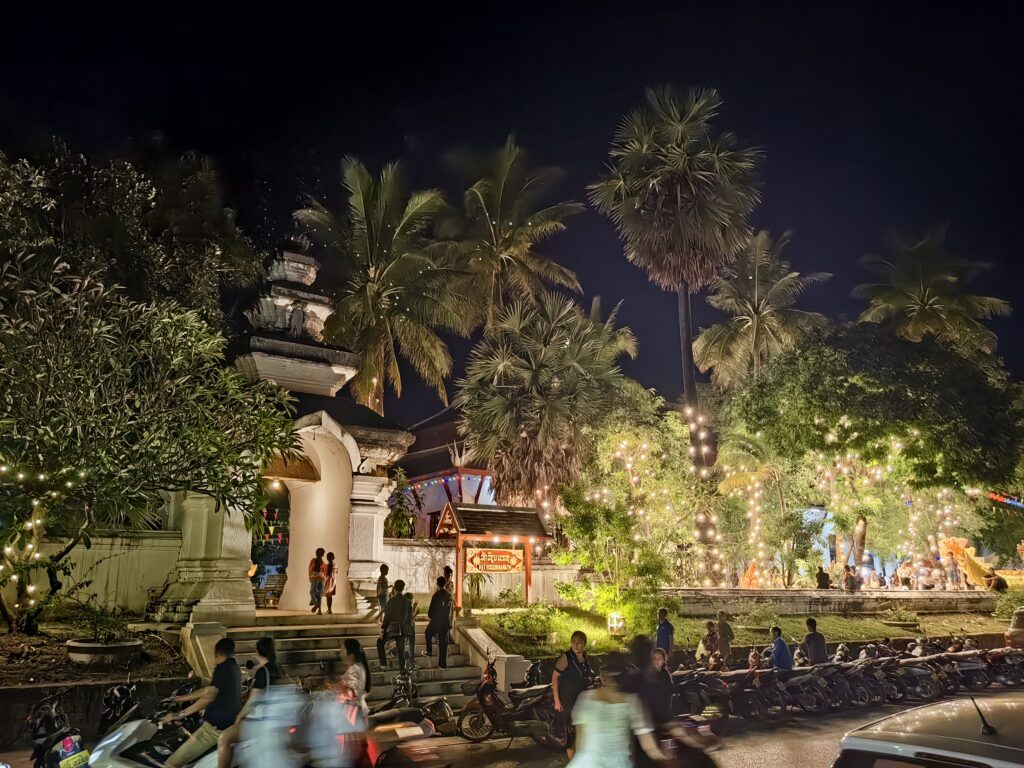 |
| What I noticed in Luang Prabang, Laos: Laos is somewhat like Myanmar and Northern Thailand. Or like China 30 years ago. The overpowering smell of charcoal fires. Used toilet paper in a bin. Don’t flush. Not so much Chinese in Luang Prabang (compared to Boten) Eating with fork and spoon, sometimes chopsticks. No knives on the table. Language, pronunciation, music like in Thailand. People are smaller than in China. Night markets. (like long ago in China) European, Chinese and Jewish tourists. French style: interior design, toilets, breakfast Buddhist. Prostitution. … The difference with the wealth in China is shocking. In Laos no Maserati, Bentley, Ferrari or Maybach. Few European or Chinese cars, many Japanese and Korean cars. Motorbikes everywhere. Also many Tuktuks No electric cars. None. Zero. Traffic is unbelievably chaotic. (Like 20 years ago in China) In Laos they drive on the right, like in Europe and China. In Thailand they still drive on the left, like in Bangladesh and India. Myanmar has switched from left to right. The clothing in Laos is old-fashioned compared to China. Every now and then you see someone wearing a sarong. Like in China: almost no crime. People are very honest |
| The hotel owner is from Vietnam, speaks almost no English or Lao (Isan). The style of most hotels is somewhat colonial – French. |
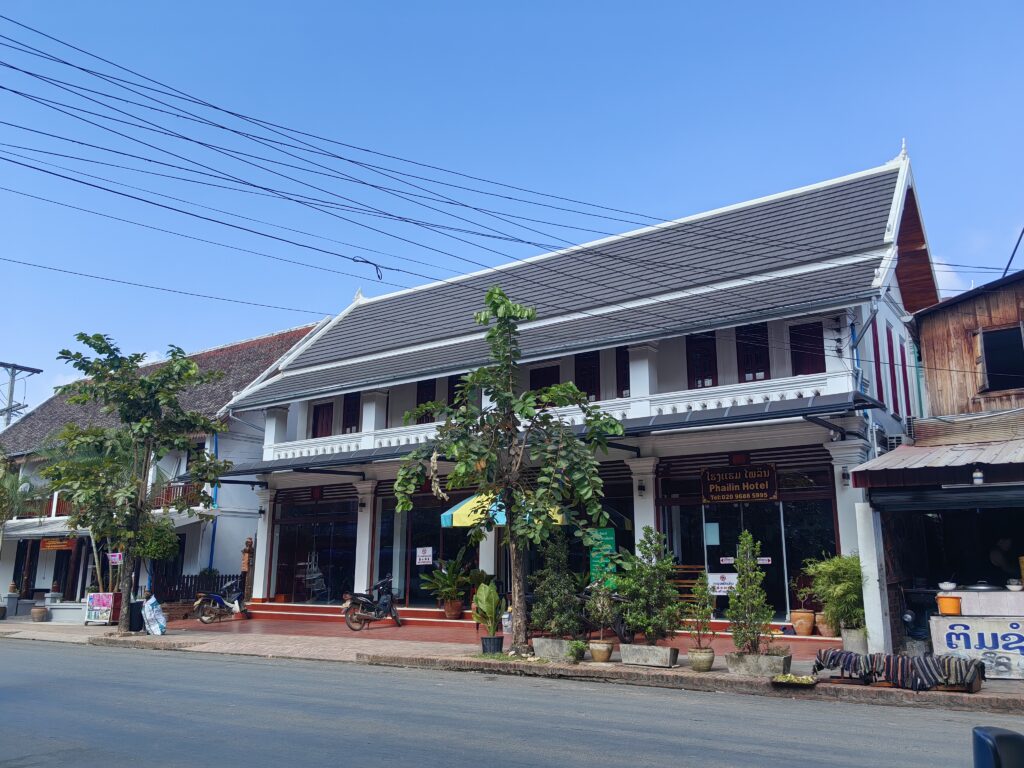 |
| The supermarket in Luang Prabang is somewhat like an Aldi or Albert Hein in Europe: |
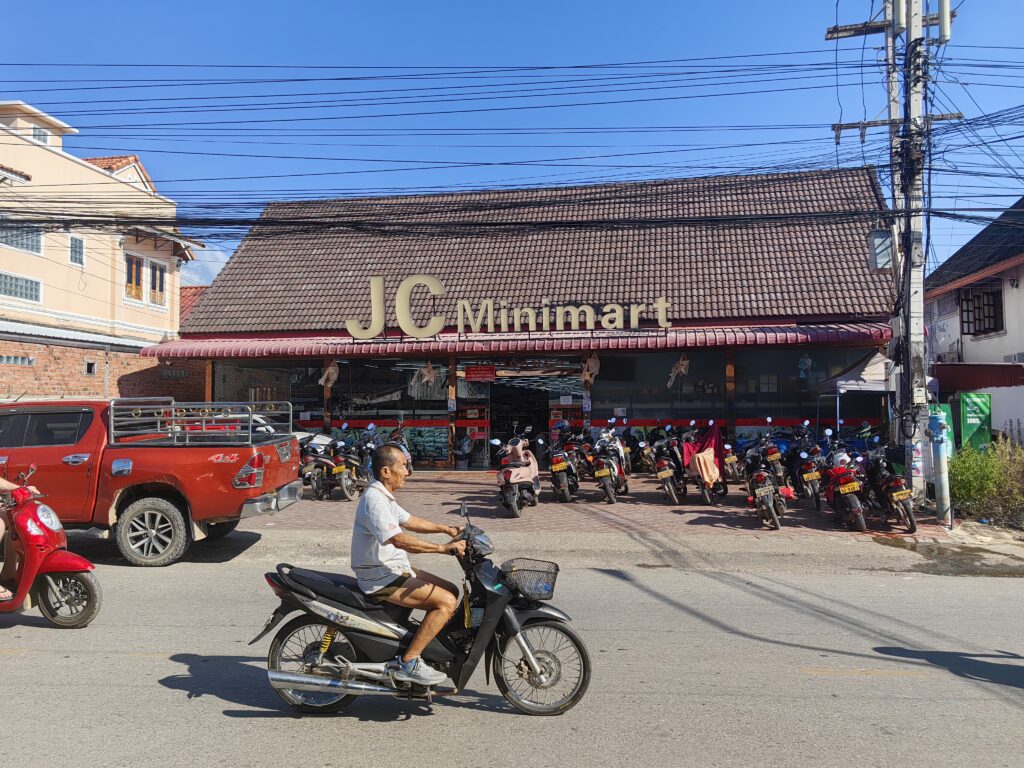 |
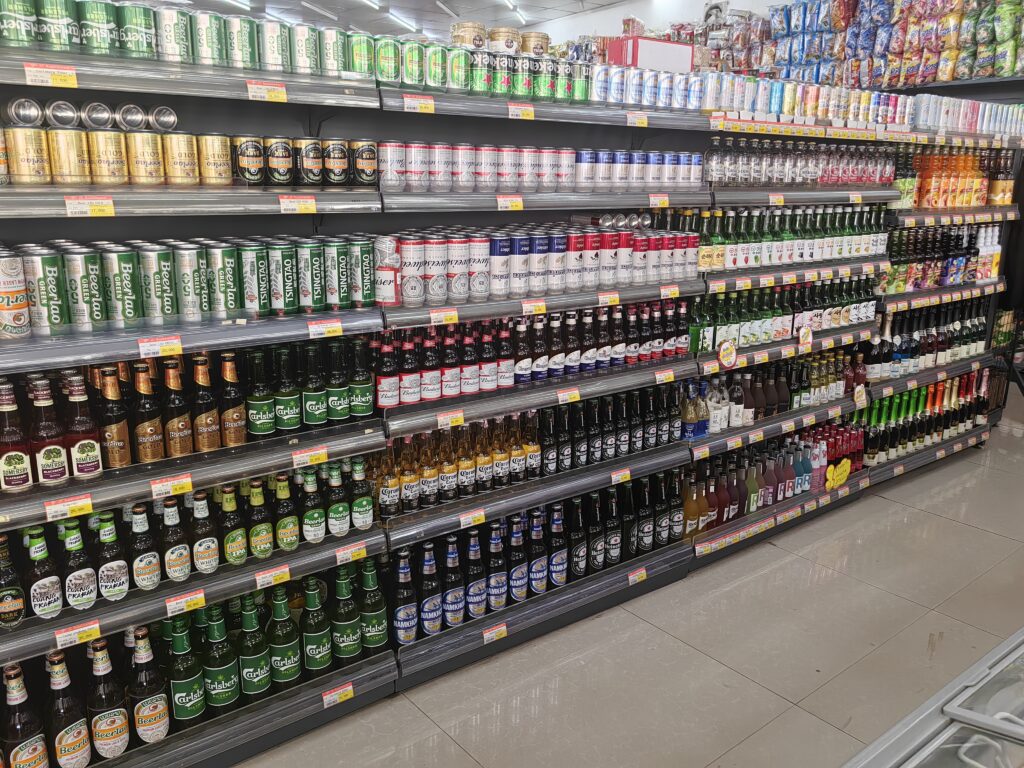 |
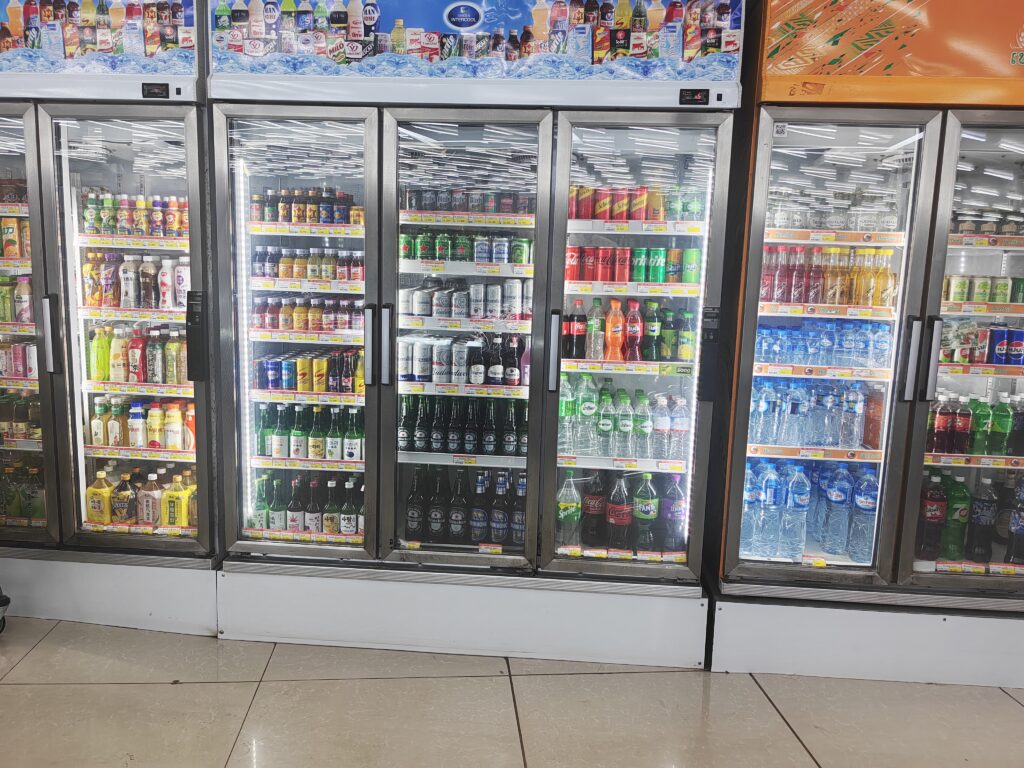 |
| About the Chinese versus the American influence in Laos: We just got back from a tourist trip from Luang Prabang to the Kuang Si waterfalls. I saw not a thousand but at least ten thousand tourists walking around there, more than 90% Chinese. In the mini-van all (mostly retired) Chinese, we were the only Westerners. During the ride I was happy to have a chat in Chinese because here in Laos communication with the local people is often very difficult. Almost nobody speaks English or any other language than Laotian. Yesterday I had a long conversation with the owner of the bar/restaurant along the Mekong, where we ate a fruit platter with yoghurt and honey. He is Laotian, speaks fluent English. He was not so happy with the increasing influence of China on Laos: China invests heavily in the region of Luang Prabang in mining of all kinds of raw materials, also in manufacturing, the production of simple items that are difficult to automate. Also many Chinese investments in the tourist sector; hotels, shopping malls and restaurants. All these are big projects like they have never seen before here in Laos. He complained that almost all Chinese tourists go to Chinese hotels and Chinese restaurants and spend too little money in Laotian restaurants and hotels. These Chinese tourists have the same communication problems with the Laotians as I do I see very few Americans here in the city of Liang Prabang. At the Kuang Si waterfalls I saw a group of 20 young Americans. They are immediately recognizable by the rude way in which they treat the Laotian waitresses. Right across from the hotel is an excellent little restaurant where they serve “Stoofvlees met frieten” (Beef Stew with Fries) and “Varkensribben” (Pork Ribs). The owner (an IT guy) is a Laotian who lived in Antwerp for 48 years and recently returned to his hometown. He speaks Antwerp dialect. |
| Remember, as I told you before, I came to China to enjoy the freedom in this country. …the freedom that I miss so much in Western Europe. Can you imagine that? |


